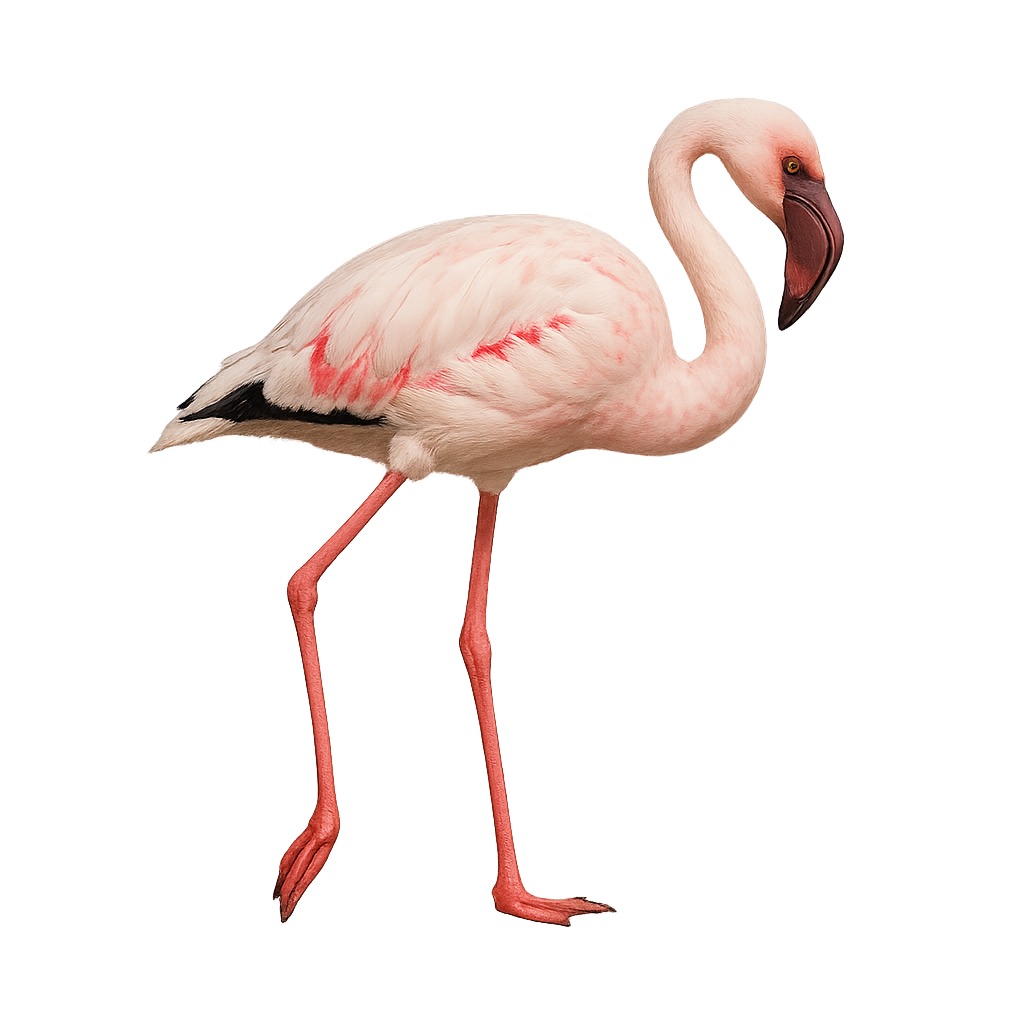Your wildlife photography guide.
Explore the lesser flamingo in detail, study its behavior, prepare your shots.
Where to observe and photograph the lesser flamingo in the wild
Learn where and when to spot the lesser flamingo in the wild, how to identify the species based on distinctive features, and what natural environments it inhabits. The WildlifePhotographer app offers tailored photography tips that reflect the lesser flamingo’s behavior, helping you capture better wildlife images. Explore the full species profile for key information including description, habitat, active periods, and approach techniques.
Lesser Flamingo
Scientific name: Phoeniconaias minor

IUCN Status: Near Threatened
Family: PHOENICOPTERIDAE
Group: Birds
Sensitivity to human approach: Suspicious
Minimum approach distance: 10 m
Courtship display: February to June
Incubation: 27-31 jours
Hatchings: March to July
Habitat:
alkaline lakes, salt marshes, coastal lagoons
Activity period :
Primarily active during the day, with peak activity in the morning and late afternoon.
Identification and description:
The Lesser Flamingo, Phoeniconaias minor, is a graceful and slender bird, primarily found in the alkaline lakes of East Africa and some regions of India. It is distinguished by its pale pink plumage, long and thin legs, and a dark red, curved beak. This flamingo is the smallest of its kind, standing about 80 to 90 cm tall. It lives in large colonies, often consisting of thousands of individuals, which helps protect it from predators. Its diet mainly consists of blue-green algae and small crustaceans, which it filters with its specialized beak. The Lesser Flamingo is a migratory bird, moving according to seasonal water level changes.
Recommended lens:
400 mm – adjust based on distance, desired framing (portrait or habitat), and approach conditions.
Photography tips:
To photograph the Lesser Flamingo, opt for early morning or late afternoon hours when the light is soft, enhancing the pink hues of its plumage. Use a telephoto lens of at least 400mm to capture details without disturbing the bird. Be patient and wait for it to approach the shores for closer shots. Reflections in the water can add an artistic dimension to your photos. Consider using a tripod to stabilize your camera and avoid motion blur.
The WildlifePhotographer App is coming soon!
Be the first to explore the best nature spots, track rutting seasons, log your observations, and observe more wildlife.
Already 1 431 wildlife lovers subscribed worldwide

